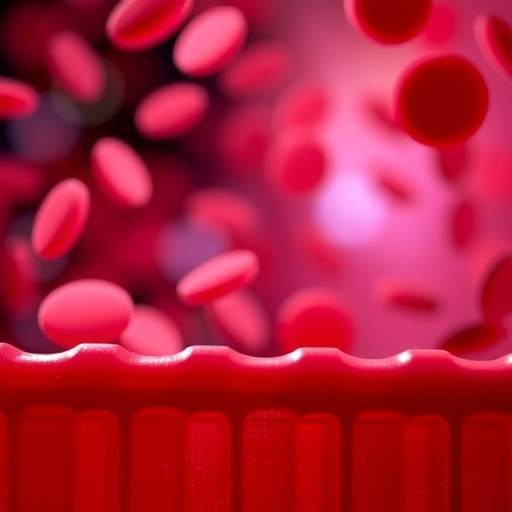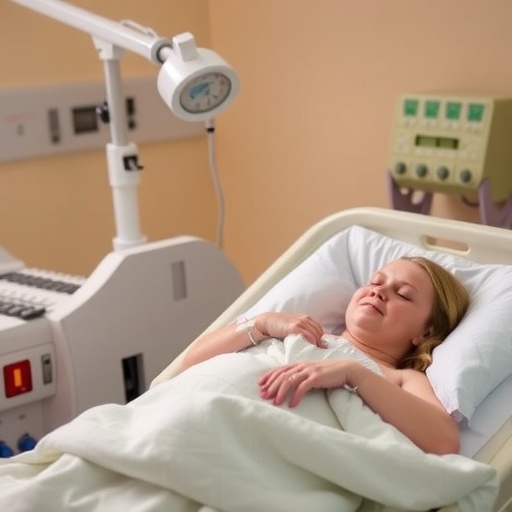
Credit: Photo by L. Brian Stauffer
CHAMPAIGN, Ill. — Long-term therapy with estrogen and bazedoxifene alters the microbial composition and activity in the gut, affecting how estrogen is metabolized, a new study in mice found.
According to the study, led by University of Illinois food science and human nutrition professor Zeynep Madak-Erdogan, the enzyme B-glucuronidase (GUS) plays a pivotal role in metabolizing synthetic estrogens in the intestinal tract.
The findings of the study, published recently in the journal Scientific Reports, suggest that changing the chemistry in the gut could be a way to improve the efficacy and long-term safety of estrogen supplements for postmenopausal women and breast cancer patients, Madak-Erdogan said.
"Our findings indicate that clinicians might be able to manipulate the gut biome through probiotics to change the half-life and properties of estrogens so that long-term users obtain the therapeutic benefits of estrogen-replacement therapy without increasing their risks of reproductive cancers," said Madak-Erdogan, also the director of the Women's Health, Hormones and Nutrition Lab at the U. of I.
While the findings need to be replicated in humans, the research offers insight into estrogen-replacement therapy's impact on the expression of microbial genes and may explain why individual patients' responses to hormone therapy can vary, the researchers wrote.
The scientists at the U. of I. divided 40 female mice into five treatment groups, which were treated with various estrogens, administered alone or in combination with the estrogen-receptor drug bazedoxifene. The mice were fed a high-fat diet and their ovaries were removed at 10 weeks of age to replicate the estrogen-deficient environment associated with menopause.
After six weeks of treatment, the researchers extracted DNA samples from the mice to examine gene transcription. They also examined the microbiota in the mice's cecums – the pouch at the beginning of the large intestine – and in their fecal samples to assess the microbial diversity and activity in their digestive tracts.
"We observed that both levels of fecal GUS activity and glucuronic acid – a byproduct of estrogen metabolism – decreased after the mice were treated with conjugated estrogens and bazedoxifene," Madak-Erdogan said. "This supported our hypothesis that estrogen supplementation affects the gut microbiome composition and estrogen metabolism.
"While the overall diversity of microbiota was not changed significantly, we found that the activities of several bacteria taxa were altered by the estrogen therapy," Madak-Erdogan said. "The levels of several bacteria associated with GUS activity in the gut decreased, including levels of akkermansia," a family of bacteria believed to have anti-inflammatory properties in humans.
Fecal levels of akkermansia were significantly lower in mice treated with the estrogen-bazedoxifene combination compared with their peers in the control group.
However, mice with higher levels of akkermansia in their fecal biome gained more weight, had larger livers and more estrogen metabolites in their systems, the researchers found.
In examining the abundance of common bacterial families in the fecal microbiota, the researchers found higher levels of several microbes, including lactobacillus and streptococcus. Lactobacillus was shown to be associated with GUS activity in previous studies by other researchers while GUS was identified in a subspecies of streptococcus.
The GUS bacteria also interacted with two metabolites of the cancer-inhibiting drug tamoxifen – an important finding because lower serum concentrations of the drug have been linked with poorer outcomes in breast cancer patients, according to the study.
###
Co-authors of the study included senior project coordinator Loretta Sue Auvill, senior data analytics advisor Michael Welge, senior research scientist Colleen Bushell, epidemiology professor Rebecca Lee Smith, research specialist Kathryn E. Carlson, research specialist Sung Hoon Kim, chemistry professor John A. Katzenellenbogen, food science and human nutrition professor Michael Joseph Miller, and postdoctoral research associate Xiaoji Liu, all at the U. of I.
The research was supported by grants from the U. of I. Office of the Vice Chancellor for Research, the Beckman Institute for Advanced Science and Technology, the National Institutes of Health, the U.S. Department of Agriculture National Institute of Food and Agriculture, and Pfizer Inc.
Media Contact
Sharita Forrest
[email protected]
217-244-1072
@NewsAtIllinois
http://www.illinois.edu
Original Source
https://news.illinois.edu/view/6367/663288 http://dx.doi.org/10.1038/s41598-018-26506-1





